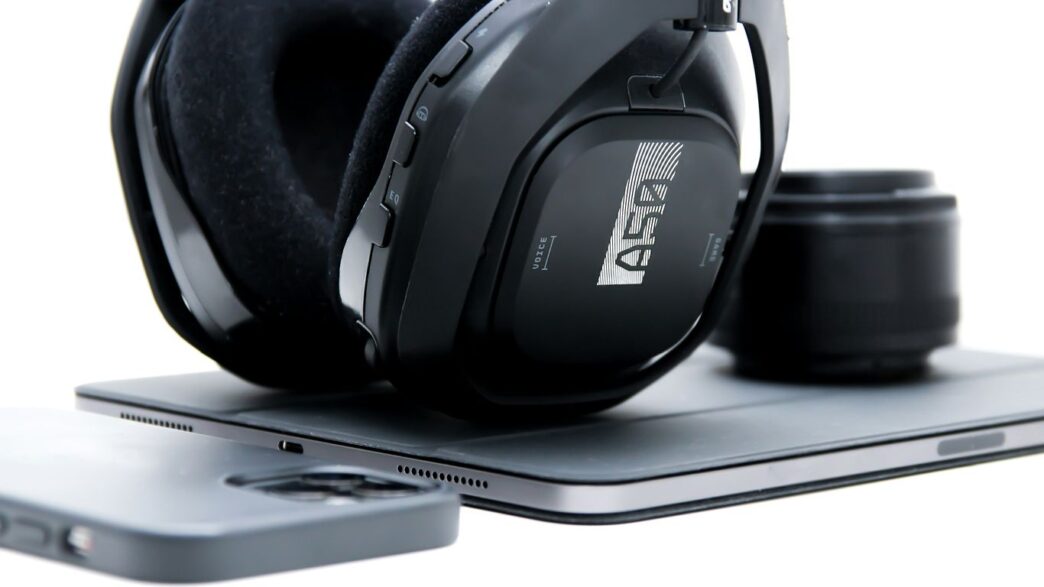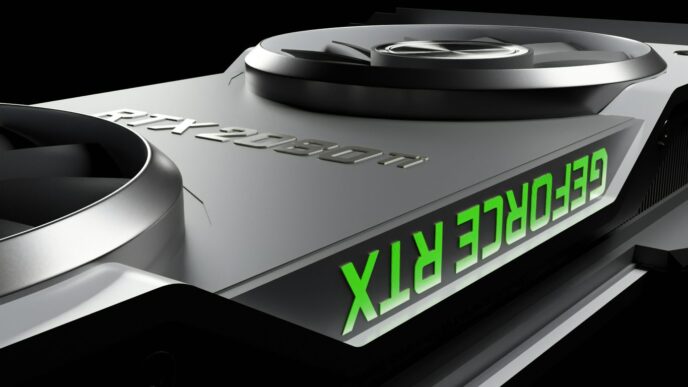So, you’re looking for a new headset for your gaming setup in 2025? It can be a bit much trying to figure out what’s actually good and what’s just hype. We’ve been checking out a bunch of gaming headsets reviews to help you sort through the noise. Whether you’re on a tight budget or looking to splurge on something fancy, we’ll help you find the audio gear that fits your game and your ears. Let’s get this sorted so you can get back to fragging.
Key Takeaways
- When picking a gaming headset, think about what you actually need. Do you need top-notch sound for competitive games, or is clear chat for talking with friends more important?
- Wired headsets are usually cheaper and don’t need charging, but wireless ones give you more freedom to move around.
- Figure out how much you’re willing to spend. You can find decent options for under $100, but better quality and wireless features often start around $150 and go up from there.
- Comfort is super important. If a headset doesn’t feel good after an hour, you won’t want to use it, no matter how good it sounds.
- Look at how the headset connects. For gaming, a fast 2.4GHz wireless connection is best. Bluetooth is handy for other devices, but can have a slight delay for games.
Choosing Your Next Gaming Headset
Alright, so you’re in the market for a new gaming headset. It’s not just about picking something that looks cool, you know? There are a few things to really think about before you hand over your cash.
Understanding Your Audio Needs
First off, what are you actually going to use this thing for? Mostly gaming, sure, but what kind of games? Competitive shooters where you need to hear every tiny footstep? Or maybe sprawling RPGs where the atmosphere is everything? Your answer here really shapes what kind of sound you should be looking for. Don’t just assume all gaming headsets sound the same. Some are tuned for punchy bass, others for clear highs. Think about whether you need a wide soundstage for feeling like you’re in the game, or if pinpoint accuracy for enemy locations is more your jam. It’s also worth considering if you’ll use it for anything else, like listening to music or taking work calls. Some headsets are better at doubling as regular headphones than others.
Wired vs. Wireless: A Crucial Decision
This is a big one. Wired headsets usually offer a more stable connection and are often cheaper. You don’t have to worry about charging them, either. On the flip side, wireless headsets give you that sweet freedom from cables. No more getting tangled up or accidentally yanking your headset off your head. However, wireless models can be pricier, and you’ll need to keep an eye on battery life. Plus, compatibility can be a headache; a headset that works with your PC and PS5 might not work with your Xbox, and vice versa. Sometimes, a headset with a 3.5mm jack can help bridge that gap, letting you switch between wireless and wired modes.
Here’s a quick rundown:
- Wired:
- Generally more affordable.
- No battery charging needed.
- Stable, direct connection.
- Wireless:
- Offers freedom of movement.
- Can be more expensive.
- Requires charging.
- Potential for interference or connection drops.
Budgeting for Quality Audio
So, how much should you actually spend? It really depends on what you want. For under $50, you’ll mostly find basic wired headsets. They’ll get the job done, but don’t expect miracles in sound quality or extra features. Step up to the $100-$150 range, and you start seeing some really solid options, both wired and wireless. This is where you can find a good balance between audio performance and convenience. If you’re looking to spend $200 or more, you’re entering premium territory. These are typically wireless, boast top-notch sound, and often come with lots of bells and whistles like advanced software or better build materials. There’s no single ‘right’ price, it’s all about matching your needs to your wallet. For example, the HyperX Cloud Alpha is a great example of a quality wired headset that doesn’t break the bank.
Top Gaming Headsets Reviews for 2025
Alright, let’s get down to the nitty-gritty. Picking the right headset can seriously change how you play games. It’s not just about hearing footsteps; it’s about feeling like you’re actually in the game world. We’ve spent a lot of time with different headsets, trying them out in all sorts of games, from fast-paced shooters to sprawling RPGs. Here are some of the standouts for 2025 that really impressed us.
Best Overall Gaming Headset
For most gamers, the SteelSeries Arctis Nova 3 Wireless is a solid pick. It hits that sweet spot between price, performance, and features. It works with pretty much everything – PC, PlayStation, Xbox, even your Switch. The sound is really good, with clear highs and decent bass, and SteelSeries even has custom audio profiles for a bunch of popular PC games. Plus, it’s comfortable enough for those marathon gaming sessions. It’s just a reliable choice that won’t let you down.
Premium Wireless Gaming Headset
If you’re looking to splurge and want top-tier audio and mic quality, the Audeze Maxwell Wireless is hard to beat. Yeah, it’s pricey, but the sound is just incredible. It handles music and movies just as well as games, which is rare. The built-in AI noise filter for the microphone is a game-changer for talking to your squad, cutting out background noise like a champ. It’s a fantastic headset if you want the best and don’t mind paying for it.
Exceptional Wired Gaming Headset
Sometimes, you just want to plug in and go, and the Asus TUF Gaming H1 Gen II is a great option for that. It’s not the prettiest headset, I’ll admit, and it only uses USB-A, which might be a bit limiting for some. But for the price, the sound is surprisingly good. The 40mm drivers give you a wide soundstage, and the virtual 7.1 surround sound really helps you pinpoint where sounds are coming from in-game. It’s a budget-friendly way to get more immersed in your games.
Audio Excellence for Immersive Gaming
Soundstage and Positional Audio
When you’re deep in a game, hearing exactly where a sound is coming from can make all the difference. It’s not just about loud explosions; it’s about hearing footsteps creeping up behind you or a teammate calling out an enemy’s position. This is where soundstage and positional audio come into play. Think of soundstage as how wide or narrow the audio feels. A good soundstage makes it feel like the sound is happening all around you, not just inside your head. Positional audio takes it a step further, giving you a sense of direction – left, right, front, back, even up and down. Many headsets use special processing, like THX Spatial Audio or Dolby Atmos, to create this 3D sound effect. It tricks your ears into thinking sound is coming from different directions, which is super helpful for spotting enemies before they spot you.
- Wide soundstage: Makes the game world feel bigger and more open.
- Accurate positional cues: Lets you pinpoint enemy locations by sound alone.
- Simulated surround sound: Creates a 3D audio experience using just two drivers.
Microphone Clarity for Team Communication
Let’s be honest, a headset is only half useful if your teammates can’t hear you clearly. Nothing is more annoying than yelling "behind you!" and having your squad just hear static or muffled noises. A good microphone means your callouts are crisp and understandable, which can be the difference between winning and losing. Some mics are better than others at picking up just your voice and cutting out background noise like keyboard clicks or fan hum. Detachable boom mics are often a good sign, as they can be positioned closer to your mouth. Some headsets even have built-in arrays that focus on your voice.
High-Fidelity Music Playback
While gaming is the main event, many of us also use our headsets for listening to music or watching videos. You don’t want to switch headsets just because you’re not playing a game. A headset with high-fidelity audio means it can reproduce sound accurately across a wide range of frequencies. This means you’ll hear music with more detail, clarity, and depth. Some headsets boast frequency responses that go way beyond what humans can typically hear, like 10 Hz to 50,000 Hz. While you might not consciously hear all of that, it contributes to a richer, more natural sound overall. This attention to audio detail means your games will sound better, and your music will too.
Comfort and Durability in Gaming Headsets
Headband and Earcup Design
When you’re deep into a gaming session, the last thing you want is a headset that feels like a vise on your head or makes your ears sweat. Comfort is actually a pretty big deal, maybe even more than the sound quality sometimes. If a headset is uncomfortable, you’re going to want to take it off after like, an hour, and that’s no good for marathon gaming or even just a few rounds.
Look for headbands that have enough give to fit your head shape without squeezing too hard. Adjustable straps or suspension systems can really help distribute the weight evenly. For the earcups, it’s not just about how they feel against your ears, but also how they fit. Swiveling and pivoting earcups are great because they can adjust to the unique shape of your skull. This makes a huge difference in long-term wearability.
Material Choices for Longevity
The materials used in a headset play a big role in both how it feels and how long it lasts. You’ll often see two main types of earcup padding:
- Leather or Leatherette: These materials tend to offer better passive noise isolation, meaning they block out more external sound. They can feel pretty premium, but sometimes they don’t breathe as well, which can lead to sweaty ears during intense moments.
- Fabric or Velour: Fabric is generally more breathable, which is a big plus for comfort during long gaming sessions. It might not block out as much ambient noise as leather, but for many people, the improved airflow is worth it.
Beyond the earcups, the overall build quality matters. Cheaper plastics can feel flimsy and might crack over time. Higher-end headsets often use more robust materials like aluminum or reinforced plastics, which feel more solid and are less likely to break.
Replaceable Components for Extended Use
This is something a lot of people overlook, but it’s super important if you want your headset to stick around for a while. Earpads, especially, take a beating. They get worn down from constant contact, sweat, and just general use. Most earpads aren’t built to last more than a year or two, tops.
Thankfully, more and more manufacturers are realizing this and are starting to make key parts, like the earpads and even headband padding, replaceable. This is a game-changer. Instead of having to buy a whole new headset when the padding gets worn out or uncomfortable, you can just buy a new set of earcups. It saves money and reduces waste. Some headsets even have detachable boom microphones, which is another component that can get damaged or lost. Being able to replace just that part is a huge benefit for the headset’s lifespan.
Advanced Features and Connectivity
Beyond just sound and comfort, the tech packed into gaming headsets these days is pretty wild. We’re talking about how these things actually connect to your PC or console, and what extra bells and whistles they come with. It’s not just about plugging in a cable anymore.
2.4GHz vs. Bluetooth Connectivity
This is a big one. Most gaming headsets use a USB dongle for a 2.4GHz wireless connection. This usually means super low latency, which is what you want when every millisecond counts in a game. It’s generally the go-to for serious gamers. Bluetooth, on the other hand, is more common for general audio devices, but it’s showing up more in gaming headsets. It’s great for connecting to phones or other devices without a dedicated dongle, and newer versions like Bluetooth 5.3 are getting pretty good. However, Bluetooth can sometimes introduce a slight delay, which might be noticeable in fast-paced games. Some high-end headsets even offer both, letting you switch between the two depending on your needs.
Here’s a quick look at the trade-offs:
- 2.4GHz Wireless:
- Pros: Very low latency, stable connection, often better range.
- Cons: Requires a USB port, dongle can be lost.
- Bluetooth:
- Pros: Versatile, no dongle needed for many devices, good for mobile.
- Cons: Can have higher latency, connection can be less stable sometimes.
Multi-Device Audio Mixing
This feature is a game-changer if you’re someone who juggles multiple devices. Imagine you’re playing on your PC and want to chat with friends on Discord via your phone at the same time. With multi-device mixing, you can often connect to both your PC (usually via 2.4GHz) and your phone (via Bluetooth) simultaneously. The headset lets you blend the audio from both sources, so you can hear your game and your phone call without missing a beat. Some headsets have physical controls or software to adjust the balance between the two audio streams, which is super handy. It means you don’t have to take off your headset to check your phone or miss important game cues.
Noise Cancellation Capabilities
While not as common as on regular headphones, some gaming headsets are starting to include active noise cancellation (ANC). This is different from just passive isolation, where the earcups physically block out sound. ANC uses microphones to detect ambient noise and then generates an opposite sound wave to cancel it out. This can be really useful if you game in a noisy environment, like a busy household or near a window. It helps you focus on the game audio and your teammates’ voices. Some headsets also offer "transparency mode" which does the opposite – it amplifies outside sounds so you can hear what’s going on around you without taking the headset off. It’s a nice safety feature, honestly. For example, the HyperX Cloud Stinger 2 is known for its solid audio performance, and while not its primary focus, good passive isolation helps keep distractions out.
Expert Testing Methodology
Real-World Gaming Scenarios
We don’t just plug these headsets in and call it a day. Our testing involves actually playing games, and not just for a few minutes. We spend hours in different genres – fast-paced shooters, immersive RPGs, and even some strategy games – to see how the headset performs under pressure. This means checking out how well you can pinpoint enemy footsteps in games like Valorant or how the booming explosions in Elden Ring feel. We want to know if the audio keeps up with the action without getting muddy or distorted. It’s about experiencing the game as the developers intended, with sound that pulls you right in.
Audio Quality Assessment
This is where we get a bit more technical, but we’ll keep it simple. We listen to a variety of audio tracks, from music with deep bass to podcasts with clear vocals, to judge the overall sound profile. For gaming, we pay close attention to the soundstage – how wide and open the audio feels. This helps determine if you can tell where sounds are coming from in a virtual space. We also look at the clarity of different frequencies. Are the highs sharp and clear without being harsh? Is the bass punchy but not overwhelming? We’re looking for a balanced and detailed sound that works well for both gaming and other media. For example, a headset like the Audeze Maxwell Wireless really shines here with its impressive audio reproduction.
Microphone Performance Evaluation
Clear communication is key, especially when you’re coordinating with teammates. We test the microphone by recording our voice in a typical room environment. Then, we listen back to check for clarity, background noise, and any unwanted distortion. We also have other testers listen in on our voice chat during gameplay to get real-time feedback. A good mic should make your voice sound natural and easy to understand, even if there’s some background noise. We consider factors like:
- Noise suppression: How well does it filter out keyboard clicks or fan noise?
- Voice clarity: Does your voice sound clear and present, or muffled and distant?
- Volume levels: Is the mic outputting a strong, consistent signal without peaking?
We also check how easy it is to mute the mic, often with a physical button or a flip-to-mute function, and if there’s any visual indicator that it’s off.
Wrapping It Up
So, finding the right gaming headset in 2025 really comes down to what you need. Whether you’re all about crystal-clear comms with your squad, want to feel every explosion in your games, or just need something comfy for those marathon sessions, there’s a headset out there for you. We looked at a bunch, from budget-friendly picks to the fancy audiophile stuff, and hopefully, this guide helps you zero in on the perfect audio companion for your setup. Don’t forget to think about comfort and whether you want to be tied down by wires or go wireless. Happy gaming!
Frequently Asked Questions
What’s the main difference between wired and wireless gaming headsets?
Wired headsets plug directly into your device, meaning they don’t need batteries and are usually cheaper. Wireless headsets let you move around freely without cords, but you’ll need to charge them and they often cost more.
How important is comfort when choosing a gaming headset?
Comfort is super important! If a headset feels bad on your head, you won’t want to wear it for long gaming sessions, no matter how good it sounds. Look for soft earcups and a good fit.
What does ‘soundstage’ mean for gaming headsets?
Soundstage is like how wide the sound feels. A good soundstage helps you tell where sounds are coming from in a game, like footsteps or gunshots, making the game feel more real.
Why is microphone quality important?
A clear microphone helps your teammates hear you easily when you’re talking strategy or just chatting. A bad mic can make you sound muffled or cut out, which can be frustrating in team games.
What’s the difference between 2.4GHz and Bluetooth for wireless headsets?
For gaming, 2.4GHz wireless is usually better because it’s faster and has less delay, which is important for quick reactions. Bluetooth is handy for connecting to phones or other devices when you’re not gaming intensely.
How much should I expect to spend on a good gaming headset?
You can find decent wired headsets for around $50. For better quality, especially wireless, you’ll likely spend between $100 and $200. The really high-end ones can go for $200 and up, offering top-notch sound and features.














